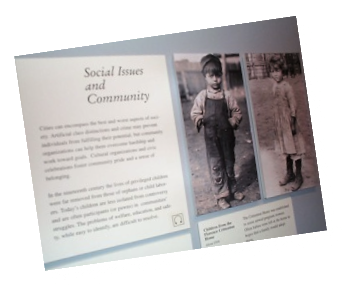
In 1974, the Child Abuse Prevention and Treatment Act (CAPTA or the Mondale Act) was passed in response to the growing social concerns about child abuse and neglect.
At the time of the passage of this bill, four to five children a day were dying of child abuse and neglect.
Today, four to five children a day are still dying of child abuse and neglect. The only difference is that over half of those children are dying in foster care and in the care of their adoptive parents. The great child protection experiment has failed, and the state is in denial about its abject failure.
MULTI-BILLION DOLLAR INDUSTRY
Child Welfare is a multi-billion dollar industry in the United States. For every child that is removed from the family home, there are a minimum of 25 service providers who derive their livelihood from that removal.
Many of these service providers contract with the child welfare agency to provide reunification services at discount rates. Consequently, parents and children are compelled to endure substandard, incompetent services which do not conform to the standards of practice governing the service providers’ respective professions. They are also forced to receive services that are not remotely designed to address the issues that brought the child under the jurisdiction of the court.
For this and other reasons, many reunification plans fail, and parental rights are terminated. The child becomes a legal orphan, freed to be re-distributed to a state-approved home, serendipitously earning a Federal adoption bonus for the state agency.
The state admits that adoptions of these children disrupt over 25% of the time. The unwanted, state-created legal orphans are casually returned as if they were defective goods. One caseworker stated at a public presentation, "These are damaged kids, and there is nothing we can do for them."
Funding for family reunification has been cut to almost nothing. The creation and support of artificial families is now licensed and funded to the virtual exclusion of family preservation services.
In most cases, the parents wanted their children, and even want them back after termination of parental rights. But the state will not reunify these children with their biological families. Instead, these unwanted, increasingly damaged children are placed on chemical restraints and warehoused in group homes and residential treatment facilities until they age out of foster care. Then, if they are lucky, they are dumped on the street in front of a homeless shelter or soup kitchen and left to fend for themselves.
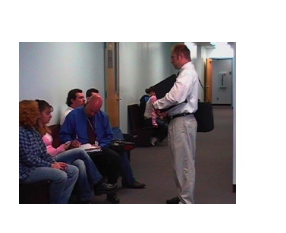
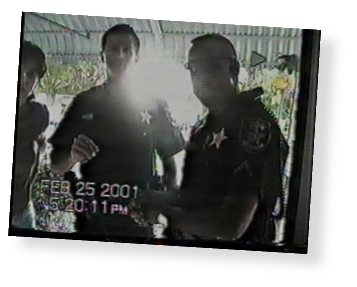
Today, officials forcibly remove a million children from their parents each year. In most cases, children are dragged, kicking and screaming, out of hiding and placed in stranger foster care. The family home was clean, the children were well fed and healthy, and did not require medical treatment for injuries. The children were removed for the caseworker's speculative risk of abuse. This is the norm for child removals.
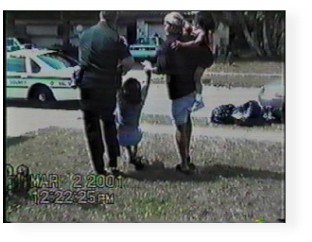
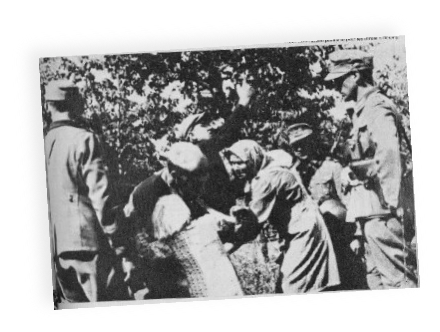
Nazi Lebensborn program forcibly removed blonde haired, blue eyed children from their parents in occupied countries to be raised by Nazis. They were denied their language, identity and culture. Children who were not able to be assimilated into the Nazi families they were placed, were sent to labor camps or killed. Older girls were used for the Lebensborn breeding program, and their babies removed at birth. After a few babies, they were disposed of. At the end of the war, American officials refused to repatriate many of these stolen children, citing that it was not in the "interests of the child." Read more about the parallels.
Disturbing Outcomes
In the past decades, child protection has destroyed more families than it has helped, often demanding or causing the breakup of families. State interventions invariably result in the loss of jobs and professions, the loss of homes and property and drive the parents into bankruptcy and even divorce.
Studies have consistently revealed that removing children has harmed more children than it has saved. Former foster children exhibit far higher rates of teen pregnancy and single parenthood, substance abuse, educational drop out rates and lower college enrollment, greater unemployability, homelessness and institutionalization in prisons and hospitals. Children in foster care are 10 to 35 times more likely to be physically or sexually abused in foster care. Foster care is not a safe alternative to the mere risk of future abuse in the family home.
The mere act of removing a child from his parents is the most traumatizing event in a child's life, and many children who are reunified exhibit PTSD symptoms, fear and panic when separated from their parents, or when the doorbell rings. They refuse to go to sleep without a parent in the room, and become extremely insecure and needy for months or years after their foster care episode. Parents universally observe that the child who was taken from them is not the same child who was returned to them.
The removal and subsequent trauma adversely affects the child's ability to form emotional bonds with others for the rest of his life. His ability to learn is significantly damaged. His prospects for success in his adult life are dramatically reduced. He is often abused, or even killed in state care. If he is sexually abused, he may perpetrate. When he has children, having been a foster child will be a black mark against him, and could cost him his right to raise his own children. Yet, professionals insist these are acceptable outcomes for the children they protect and place in foster care.
Over 80% of children receiving therapeutic services in foster care required this treatment only after they were removed from their parents, to treat symptoms related to the trauma of their removal from the family home. Over 85% of children removed from their families exhibit no harm or injury at the time of removal. They do not require so much as a Tylenol for a sore bottom from a spanking. Yet, rather than providing services to the family in the home, the agency removes the child and places him with strangers. Why? Because Congress has provided perverse financial incentives to remove children, and next-to-nothing to keep the child in the family home.
Recommended links:
American Family Advocacy Center Blog
Sage Wisdom Press - books and more for anyone seeking information about child welfare
Legal Resources - for attorneys only, parents not allowed
Family Advocate Consumer Advisory
The Mighty Pen
If you know your rights and the court won't enforce your rights, you have no rights.
The Pen is Mightier Than the Gavel blog.
FRAI Project

Click to join FamilyRightsAdvocacy IMPROVEMENT Project
discussion of the practice of Family Advocacy.Archives are open to the public.
Amazon search
Donate
Website Design
Website Hosting
Payloadz
Support Us
Internet Archive v. Shell Settlement Announced
Denver, CO April 25, 2007. . .More
Shell v. AFRA, CPS Watch, et al
Copyright Infringement blog
Important Notice about using this site
Information included on these pages is not legal advice, we are not attorneys. You are advised to consult with an attorney on any legal matters.
Any legal documents on this site were prepared and/or drafted by attorneys or under the supervision of an attorney, or by pro se respondent parents and/or subject children and are published here with their permission. Any phone calls or other oral communications with our staff may be recorded at our discretion. Any person engaging in conversation with any of our staff is presumed to have given express consent to be recorded. ALL MATERIAL ON THESE PAGES IS COPYRIGHT 1996-2011 SUZANNE SHELL reproduction without written permission is prohibited.
If you copy, you are entering into a contract
Reproduction and distribution prohibited without permission. This web site is licensed to be viewed on a computer device only while connected on the Internet connected to this web site. This license expressly does not include off-line viewing of content. Permission and limited, non-exclusive license to reproduce this web site, by any method including but not limited to magnetically, digitally, electronically or hard copy, may be purchased for $5,000 (five thousand dollars) per printed hard copy page per copy, in advance of printing. We accept Visa, Mastercard, American Express, check, money order or cash. WE DO NOT ACCEPT GOVERNMENT PO’S - this fee schedule applies to the general public and particularly to any state agency, employee, contractor, GAL, attorney or CPS service provider or any person listed on the Consumer Advisory. CPS agencies and associates and our competitors have found this site to be extremely valuable, preferring the contents of this site to any other site. Hence, the premium price. Family Rights activists or advocates may obtain reduction or waiver of license fees upon request. License and permission s expressly denied for any use in a court case or official proceeding without express written permission and prepayment of posted fees or fee waiver.
Purchases through Payloadz, Scribd, etc.
Forum selection clause
Anyone visiting this site or copying any content belonging to the copyright owner consents to jurisdiction and venue remaining in El Paso County, Colorado, or the United States District Court, District of Colorado, at the sole discretion of the copyright owner. This web site is registered with the United States Copyright Office.
You have just been accused of abusing or neglecting your child. You have no idea where this accusation came from. Your first impulse is to cooperate with the caseworker After all, you have nothing to hide.
And so. . .the nightmare begins. . .
This site attempts to strike a reasonable balance between the “seize-the-child-and-ask-questions-later-guilty-until-proven-innocent” knee-jerk State reaction to less than perfect homes and the rabid, abusive, paranoid ranting of certain aggrieved parents who lash out indiscriminately in unreasoned anger, abusively shouting down all critical commentary or opposition.
Some of the more vocal unreasoned critics are seeking public vindication for their actual child abuse and are piggybacking their complaints onto the legitimate family rights grassroots movement. Some are even pretending to leadership they are not qualified to assume. It is inevitable that those legitimately accused of child abuse or neglect would jump on the family rights bandwagon to whip up the masses to their cause, seeking to win the vindication in the court of public opinion that they could not win in our judicial system. Others are truly falsely accused and suffer egregious indignities and abuses by state agencies, justifying their righteous outrage.
In between these two extremes are the majority of parents who are subjected to the not-so-tender mercies of overworked child welfare agencies. These are varying degrees of less-than-perfect parents who are doing the best they can with the tools they have. Their parenting practices may or may not conform to the statutory definitions of child abuse, but since that determination is so subjective, they are universally perceived as being abusive or neglectful.
Many times, a temporary family crisis becomes the vehicle through which agency intervention exacerbates a relatively minor problem into destruction of the family. Other times, the parents actually go to the agency for help, and are rewarded for their attempts to be better parents by losing their children forever. Some parents were abusive--once--but are treated as if they were chronic abusers who refuse to improve themselves rather than the imperfect parent who made one mistake. Parents are even punished for the absurd mistake failing to predict that someone else would abuse their child and preventing that unpredictable abuse.
Anything can trigger the coercive nightmare of guilty until proven innocent; a car accident, bedwetting, poverty, homelessness, having too many children, a rebellious or lying teen, a runaway, a food allergy, a legitimate medical condition, an acrimonious divorce, an argument, dietary practices, religious practices, being the victim of domestic violence or simply a spanking. Irrationally, what one family does may be considered abuse, while their neighbor who does the same thing is not considered abusive. With the absurdly high standards of parenting perfection demanded by state agencies and courts as a condition of keeping your children, it is quite simple to make a case against any parent,
Bottom line, most parents who are branded as abusers, aren't really abusive. They were just imperfect. It could be any one of us.
Hopefully, we can provide these imperfect parents with a few good tools to assist them during this crisis.
American Family Advocacy Center takes an objective look at the practices and outcomes of child welfare practitioners and of accused parents. Unlike any other participants--be they professionals or parents--we offer reasonable, cost effective, proven solutions to many of the problems faced by professionals and families alike. It has been our experience that reasonable people can make these cases work without sacrificing anyone's dignity, self-determination or the welfare of the children.
Child welfare cases are complex, emotionally charged and fraught with conflict on both sides. This systemic dysfunction has contributed to the high rates of failure by both the agencies and the parents, and has been the elephant in the room for decades.
Our findings are based on our observations and participation in this system for nearly twenty years. We have focused on identifying the problems--as opposed to the symptoms--and devising solutions.
By virtue of over fifteen years of exceptional analysis, diligence, research, testing and application, our director developed an innovative and pioneering method for use by parents and attorneys in child welfare cases which significantly reduces the amount of time a child spends in out-of-home placement, or even prevents out-of-home placement completely. It reduces the trauma of intervention to children and their parents and empowers families, who find hope in a formerly hopeless situation. Follow up on families who have been reunified using this method indicate far fewer future abuse or neglect incidents or reports than average.
This method speeds up the reunification process from the normal time frame of months or years, to mere days or weeks. It reduces the incidence of termination of parental rights from up to 50% of the cases to less than 10% of the cases.
This method makes court-appointed representation much more vigorous and effective without increasing the costs or workload to the court-appointed attorneys. It reduces the billable time for attorneys who are paid by their clients, giving the client more bang for the buck and allowing the attorneys to carry a larger case load without increasing their workload.
This method frees up agency resources to focus on truly abused and neglected children, rather than wasting their limited resources on children who do not meet the statutory criteria of abuse or neglect. It reduces the administrative costs of the agency thereby reducing the burden on taxpayers.It reduces the demand for foster homes. Good foster home are in limited supply, and it prevents the agency from having to place children in not-so-good foster homes, thereby reducing agency liability.
It reduces the docket on overburdened courts, and dramatically shortens the time a case is open, or even prevents a case from being opened. Cases that are opened have the parents appearing before the judge well prepared, properly attired and presenting as a contributing member of the treatment team.
This method conforms to the statutory mandates of the best interests of the child, the safety and welfare of the child and achieving permanency within mandated time frames. It does all this and more. The beauty of this method is that everybody wins.
Pursuant to this method and based on the models implemented in various jurisdictions, a competent attorney or attorney/advocate team along with cooperating parents using this method--regardless of the cooperation of the agency--can accomplish one or more of the following in over 90% of their cases:
a. Prevent the removal of the children and/or close down the investigation without court intervention.
b. Prevent the state from retaining custody at the shelter hearing.
c. Get the children returned home before the adjudicatory hearing.
d. Prevent adjudication if the methods are implemented prior to the adjudicatory hearing.
e. Reunify the family in 1 day to 2 months after adjudication instead of 9-15+ months.
f. Prevent termination of parental rights (TPR) hearing from occurring once the petition is filed and ultimately get the family reunified.
g. We have even gotten TPRs overturned and the family reunified.
When the agency is cooperative and supportive of the services we provide, the results are even more dramatic and the outcomes for children are far superior to the existing models.
In many jurisdictions, the participants on both sides remain recalcitrant, each whipping their respective adherents into emotional frenzies against each other. Rather than focusing on positive conduct and support, both factions prefer to continue their abusive efforts to force their own agendas on each other, indicating a shared pathology of dysfunction, abuse and the assertion of inappropriate control over others.
By their own admissions, a disproportionately large percentage of caseworkers and child welfare professionals claim to have been abused as children, and have made it their occupation to prevent other children from being abused, often employing the same abusive conduct they condemn the parents for. Parents are accused of perpetuating the cycle of abuse, yet, the professionals visit the same cycle upon client families when they intervene. The agencies and families are at war, and the children are the innocent pawns.
Child welfare is a dysfunctional system, administered by dysfunctional and damaged people who are endowed with unprecedented power, and who are subject to no oversight, imposing their own confused and inconsistent agenda upon dysfunctional and damaged families. Many who administer this system recognize the dysfunction, but don't know what to do about it.
Until this dynamic changes, the child welfare system will not succeed in it's mandate to protect children. American Family Advocacy Center has a proven model for success, which features objectively positive outcomes for children and families. This method is available to anyone whose real agenda is the best interests of the child. We provide training for attorneys, caseworkers, judges and all professionals who administer child welfare cases. You may contact us for more information.




